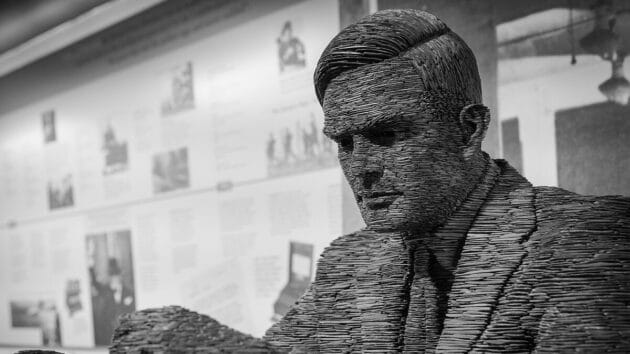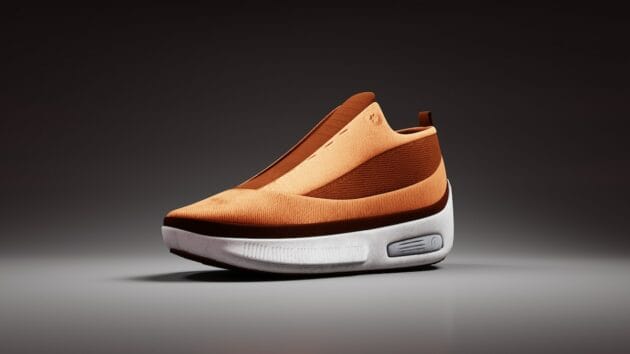Three-dimensional (3D) printing is an innovative technology revolutionizing the manufacturing industry. For one, it allows businesses to produce complex designs and prototypes quickly and efficiently. As it continues to improve, 3D printing can expand into more applications in various business industries. In fact, the global 3D printing market is predicted to reach USD$83.90 billion by 2029, growing at a compound annual growth rate of 24.3% from 2022 to 2029.
The future of 3D printing looks very promising. The potential for this technology is vast; as more businesses adopt it, various industries will see and understand how it can be beneficial in streamlining operations and boosting overall efficiency.
What is 3D printing and how can it benefit your business?

3D printing, also known as additive manufacturing, uses a complex machine called a 3D printer, which squeezes molten plastic or other materials from a small nozzle. Following computer-generated design plans, the printer then creates a three-dimensional object by building the material from the ground up, layer by layer.
3D printers are generally compatible with raw materials such as plastics, polymers, steel, titanium, gold, and ceramic. You can use these materials to create various objects—from sculptures to airplane components.
If you’re wondering whether investing in 3D printing technology is the right choice for your business, read more below as we explore how leveraging this technology can benefit your company.
Related: How to Use 3D Modeling in Business Promotion & Advertising?
1. Customization

With 3D printing services, you can customize your products according to the specific needs of your customers. Customization can specifically benefit businesses selling niche products or requiring non-standard dimensions. If you’re searching for customizing your products, 3D printing solution providers can help you develop unique items that can’t be easily produced using traditional manufacturing methods.
3D printing technology has also significantly impacted sectors like healthcare and aeronautics. In fact, 3D printers have been successfully used in the medical field to be manufacturing implants and prosthetics. The size, shape, and material of these devices are precisely tailored to the specific needs of individual patients so they can recover faster and more comfortably.
In the aeronautics industry, engineers can now create complex, high-precision components using 3D printers. Something difficult or impossible to manufacture using traditional methods. Moreover, the process ensures improved performance and safety. According to a study, a single 3D-printed component can reduce fuel costs by 5.41% and air drag by 2.1%.
2. Rapid prototyping

3D printing technology also allows for rapid prototyping. With this, businesses can create a physical product prototype quickly and efficiently, leading to faster testing and feedback generation. 3D printing can help a business to minimize production times.
In the past, creating prototypes took time. Even minor changes to the prototype may add weeks to the production timeline, causing delays in the launch or product delivery by months or even years. Businesses now approach prototyping and manufacturing productively with 3D printing.
Today, approximately 68% of businesses use this technology for prototype creation and pre-series production. Using professional 3D printers, businesses can test and refine their products in days rather than weeks or months. This unprecedented speed is a game-changer for any business size. They can stay ahead of the competition since they can bring their products to the market faster.
3D printing also allows businesses to produce and deliver products on demand without worrying about extensive inventory management. For example, some of the world’s top car manufacturers print spare parts on demand to keep inventory low in their customer service centers.
Overall, businesses benefit from faster lead times and greater control over their production and delivery process.
3. Reduced production costs

In line with the previous point, considering that the production process can be streamlined, 3D printing can significantly reduce business production costs. 3D printers can easily produce small quantities of products at a reasonable price — the perfect choice for small businesses and startups. Such tools can also help eliminate the need for expensive tooling and molds.
Furthermore, additive manufacturing only involves a few pieces of equipment, which means lower maintenance fees and labor costs. In contrast, traditional manufacturing plants are much more labor-intensive, requiring many employees to operate the equipment and maintain the production line.
4. Enhanced creativity

3D printing technology enables businesses to explore new design ideas and concepts traditional manufacturing methods cannot execute. Companies can introduce unique products and promote innovation in their niche using this technology.
Businesses can 3D-print highly accurate and precise models using computer-aided design (CAD) software. Alternatively, they can also use 3D scanning technology to collect digital data on the shape and appearance of real objects. It allows them to skip the ideation process and go straight to 3D printing, which is particularly useful for reverse engineering and replica manufacturing.
See also: 6 Fantastic Tips for Managing Your Business Expense Reports.
5. Improved product design and quality

To attract and retain customers in a highly competitive business landscape, product quality should be prioritized. Businesses looking to improve their product design and quality can gain from 3D printing as more customers are now willing to pay a premium for high-quality products.
3D printing technology can help produce brand-exclusive products by adding intricate details and unique features to them. It also allows for quick extensive testing and design modification. Since they can rapidly prototype and test new designs, businesses can identify and address any issues or flaws immediately, enabling them to release higher quality and more reliable products on time.
Complex geometric structures such as cavities or lattices can’t be produced in a single piece through casting, turning, or milling. They can, however, be cost-effectively manufactured using a 3D printing technique called selective laser sintering or SLS. As the term implies, SLS uses high-powered lasers to sinter or fuse polymer powders.
Depending on the material used, products created through SLS are often physically and mechanically superior to their conventionally manufactured counterparts. Examples include helmet lattice structures to improve impact absorption and ventilation, glove inserts to enhance gameplay and reaction time, customized sports car seats, etc.
6. Reduced waste

3D printing technology can help any business to reduce production waste as only the exact quantity of raw materials and resources are used. In contrast, traditional manufacturing often involves trimming or carving excess materials, producing scraps that need either recycled (using more energy) or disposed of.
By switching to 3D printers, businesses can minimize energy waste and reduce their carbon footprint. For instance, builders that use 3D-printed cement are estimated to produce 60% fewer carbon emissions than those still using traditional cement. Moreover, experts also believe that the entire construction industry could reduce waste by as much as 90% by opting for 3D-printed materials.
7. Simplified supply chain

Many companies seek to simplify their supply chains to lower operational costs and ensure quality consistency. 3D printing for in-house manufacturing has emerged as an effective solution to this. Statistics show that in 2021, the shipment of 3D printer units reached approximately 2.2 million.
In-house 3D printing offers greater flexibility and agility in responding to demand shifts or supply chain disruptions. Instead of purchasing from third-party suppliers, businesses can use 3D printers to manufacture critical parts in-house.
Businesses can now cease relying on imports by producing components closer to home. This is especially significant during trade wars and other times of political tension where global purchase costs can quickly escalate. Companies ensure operations sustainability and cost-effectiveness by shifting from imports to focusing more on local assembly hubs.
8. Improved customer satisfaction

Besides aiding a business in its production or manufacturing process, 3D printing technology can also help improve customer relationships, increase satisfaction, and promote brand loyalty. It’s no secret that a business thrives on its customers. As such, to ensure long-term success, customer satisfaction should always be a company’s top priority. And to help your company stay ahead of the game and meet customers’ evolving needs, you can leverage industrial 3D printers to revolutionize how you cater to your clientele.
Aside from faster and more efficient production of custom products, incorporating 3D printing technology into your operations can give you a competitive edge in your niche. And since it can help you meet customers’ expectations who want their items delivered promptly and seamlessly, you can provide a superior customer experience.
Related: Top 10 Best Computer Servers for Small Business (2023).
Final words

3D printing, a new and widely used technology, can boost a company’s ability to stay ahead of the curve in today’s competitive business climate. Through rapid prototyping, manufacturing, and 3D modeling, this method has greatly influenced fields including healthcare, aviation, and the auto industry.
Companies can improve the speed and quality of their operations by investing in 3D printing. They can personalize their offers, minimize expenses, foster creativity, and enhance product design. As production’s lead time reduces, they become able to produce and distribute goods more quickly. It can also help lower production waste, which makes the operations environmentally friendly.
It’s clear that 3D printing technology is here to stay and will continue playing a role in shaping how most industries will operate in the future.





